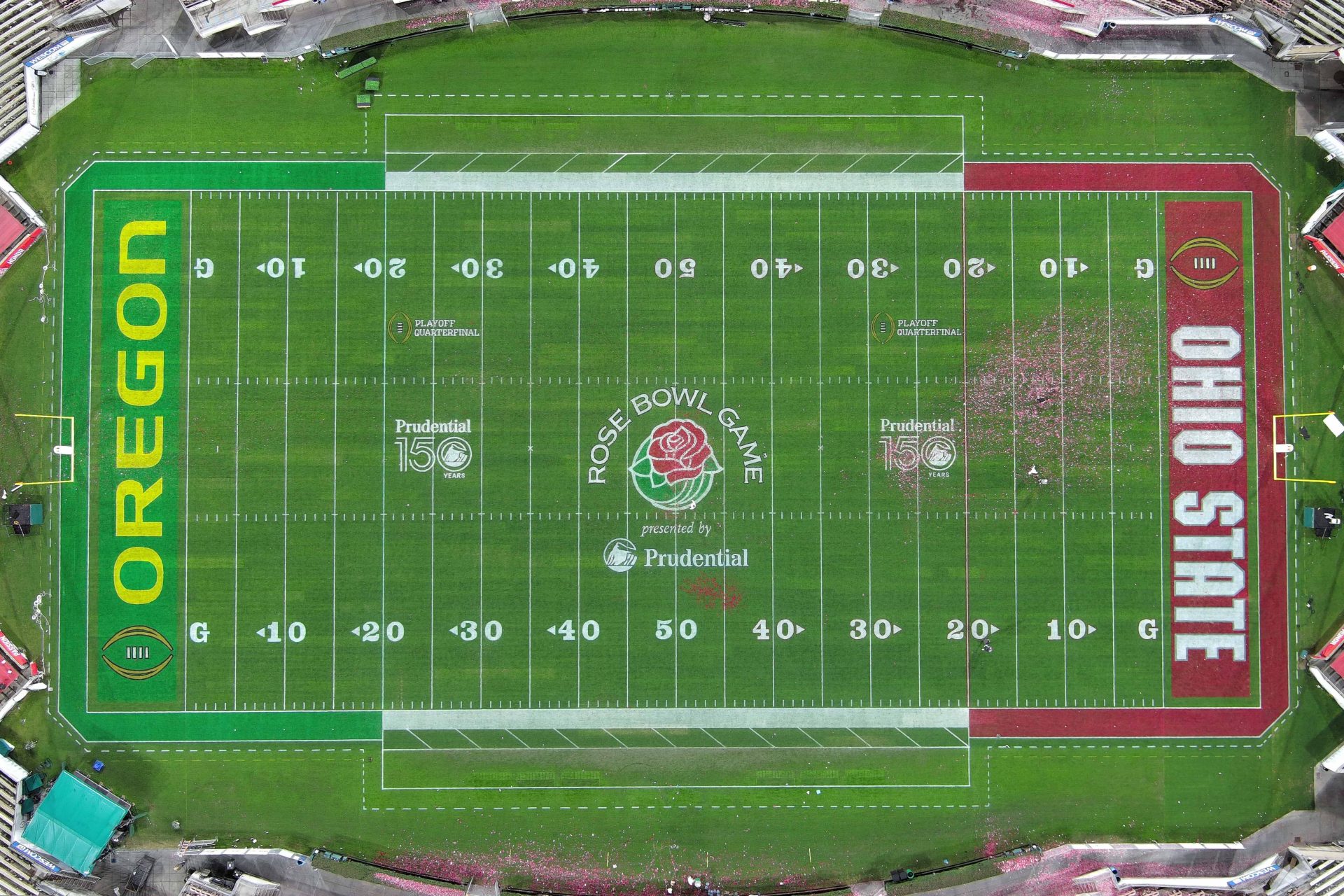Ever watched games at different levels and wondered if the fields are actually the same size? From those Friday night high school showdowns to Sunday’s NFL clashes, football fields look pretty similar, but there are some key differences that actually change how the game is played.
While most of us can picture that 100-yard stretch between the goal lines, the width dimension gets a lot less attention. The truth is that sideline-to-sideline measurement tells an interesting story about the game at every level.

Football Field Width Guide: Comparing High School, College, and NFL Dimensions
Here’s something that might surprise you – the width of a football field is exactly the same whether you’re watching teenagers play on Friday nights or pros on Sunday: 53⅓ yards (that’s 160′). From the local high school stadium to the billion-dollar NFL venues, that width measurement never changes.
Coaches, it’s imperative that all football players learn the landmarks & field identification on the football field. Here’s a comprehensive guide of the football field dimensions, the distance between other landmarks, hash markings & the sidelines. pic.twitter.com/FXauLDWwUn
— Coach Darien Antonio Thompson (@CoachDThompson1) May 6, 2025
To put the whole field in perspective:
- From end to end, we’re talking 120 yards, including those two 10-yard end zones
- The playing area between the goal lines is your classic 100 yards
- All together, that’s about 1.3 acres of grass (or turf)
Those end zones? Always 10 yards deep, stretching the full width of the field. And those thick boundary lines aren’t just for show – they span 6 feet wide to help players and refs clearly see the boundaries during those sideline-tight plays.
Hash Marks and Goal Posts: The Key Differences Between Levels
Now here’s where things get interesting. Those hash marks – you know, the spots where they place the ball between plays – tell a completely different story:
- High school hash marks are practically sideline-to-sideline at 53’4″ apart
- College narrows things down to 40′ between hash marks
- The NFL squeezes them to just 18½’ apart
This matters way more than you might think! When a high school running back takes a handoff near the hash marks, he’s got a whole lot of field on one side and not much on the other. That same play in the NFL gives him much more balanced options to both sides.
Even the goal posts aren’t the same. High school kickers aim between uprights that stand 23’4″ apart, while college and NFL kickers thread a narrower 18½’ target. No wonder making the leap between levels is so challenging for special teams!
Hash marks weren’t always part of football – they only showed up in 1933 to keep action away from the sidelines. They’ve been tweaked over the decades as the game has evolved.
So next time you’re watching games across different levels, pay attention to where the ball gets spotted. Those seemingly small differences in hash mark placement completely change how coaches call plays and how defenses respond – all while the actual width of the field stays exactly the same.
College Sports Network has you covered with the latest news, analysis, insights, and trending stories in college football, men’s college basketball, women’s college basketball, and college baseball!

